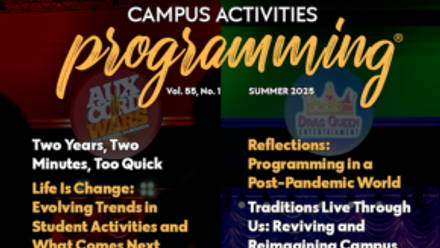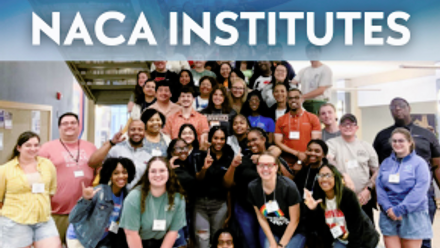Low-Pressure, Big Impact: Why Movie Programming Works for Gen Z
When it comes to planning campus events that actually attract students, many programming teams are rethinking what "engagement" looks like. Between rising social anxiety1 and growing restrictions around traditional DEI programming2, the standard event playbook doesn’t always deliver. But one solution continues to check all the boxes: movie programming.
It might seem simple, but the impact isn’t. Films offer a shared experience without requiring students to perform, introduce themselves or navigate social pressure3. They can show up solo, zone out or laugh with friends – whatever they need. For students who feel “peopled out” by midweek, a movie night can feel like a welcome reset.
Better yet, these events meet students where they are financially, too. With streaming costs rising and movie tickets averaging $16+, free or low-cost campus screenings offer connection and entertainment with zero financial barrier4. That matters more than ever at a time when 80 percent of students report anxiety about monthly expenses5.
And the demand is there. According to research, 85 percent of Gen Z went to the movies last year, and nearly a quarter saw five or more films in theaters6. In short: movies are back – and students are watching.
Why Movie Nights Still Work
Movies hit a sweet spot for Gen Z: they’re nostalgic, culturally relevant and flexible. You can pick titles that tap into current trends or throw it back to childhood staples, and, either way, you’ll likely see turnout rise.
Even better? You can build creative themes or collaborations around your screenings. Think “Decades Night” with retro snacks, or a student-voted film series during midterms. Use movies as a jumping-off point for other engagement: polls, pop-ups, playlists or collabs with campus clubs. You can even let students help choose the titles – they’re more likely to show up if they feel heard.
Want to Boost Interaction? Gamify It.
Interactive elements can take a movie night from passive to memorable. Some campuses add trivia or bingo to the event – right on students' phones – using tools like Screen Play by Swank, a mobile add-on that allows students to play games in real time alongside the movie. It’s a low-effort way to drive participation without making anyone feel called out. Just phones, fun and maybe a prize.
Using Movies to Support Inclusion (Without Breaking Policy)
DEI programming is more complex than ever. In states where certain labels or events are being scrutinized, student affairs professionals are looking for workarounds that still foster belonging.
Movies offer that path.
Films can be selected to spotlight diverse creators, global stories or underrepresented identities – without explicitly billing the event as DEI-focused. For example, programming a series like Voices of History and Hope or Stories That Inspire Change allows campuses to host meaningful, story-driven events with broad appeal. These screenings can align with cultural heritage months or timely observances, offering both visibility and a platform for discussion.
Benefits of Movie Programming
- Perfect for socially anxious or overstimulated students
- Taps into nostalgia and current pop culture
- Can be gamified with low-lift add-ons
- Encourages inclusion through storytelling without policy concerns
- Scalable and easy to repeat throughout the year






